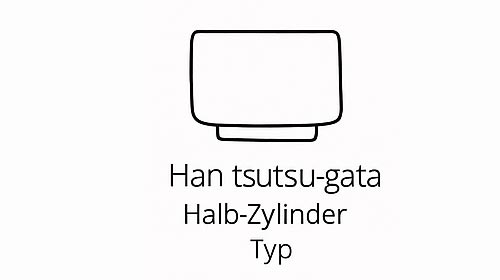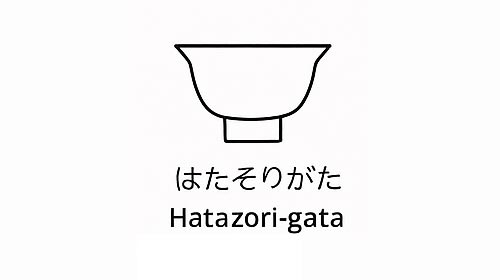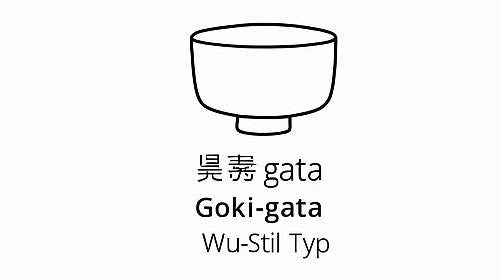The Han tsutsu-gata chawan is a hybrid of two worlds. Neither completely cylindrical nor completely open, it combines elements of the tsutsu-gata (cylindrical shape) with the accessibility of round bowls.
"Han" (半) means "half," and "tsutsu" (筒) stands for tube or cylinder. The shape follows a vertical orientation , yet remains drinkable and accessible.
Features & Structure
The bowl features high, straight sides, a minimally indented rim , and a clear, stable base. The volume is generous but not excessive—ideal for retaining heat in cooler temperatures.
For the cold season
Han tsutsu-gata is traditionally used in late autumn and winter . Its upright design prevents the matcha from cooling down as quickly—an important aspect of seasonal tea preparations in the Japanese tea ceremony.
The shape allows for precise hitting with the chasen – but more in vertical movements than in a wide circle.
Production & Glaze
It is typically made using high-fired techniques —Hagi, Shigaraki, or Iga pottery are particularly common. The glazes are usually simple, in matte white, gray, or sandy tones , sometimes with a delicate craquelure texture.
Meaning in the ritual context
The Han tsutsu-gata chawan has a calm, almost architectural appearance. It signals concentration and inner recollection. In practice, it is often used in cooler tea rooms or at more formal occasions where contemplation is more important than expression.
SEO strategy: “Tall Matcha Bowl”, “Winter Chawan”, “Cylindrical Matcha Bowl”
These terms lead directly to Han tsutsu-gata – a form that is not intended for beginners, but plays an integral role in the depth of the tea ceremony.




Leave a comment
This site is protected by hCaptcha and the hCaptcha Privacy Policy and Terms of Service apply.